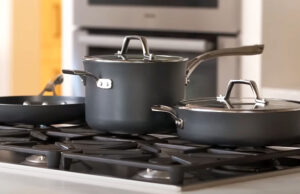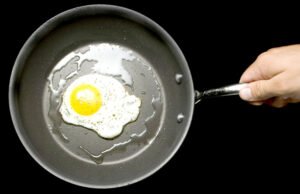As an Amazon Associate, I earn from qualifying purchases at no extra cost to you.
How to Fix GE Dishwasher Door Spring (Quick Steps)
The dishwasher door just dropped too fast and almost hit your leg. That scary moment makes you realize something is wrong. The door should not feel heavy or slam down. It should open and close smoothly. In this article, you will learn how to fix a GE dishwasher door spring in a simple way.
Find the Problem
The first thing you need to do is check the problem carefully. Many people think the door spring is broken right away, but sometimes it is only loose or slipped out of place. Open the dishwasher door slowly and notice how it moves. If it falls fast and heavy, the spring might be damaged or disconnected. If it feels stiff and does not open evenly, then the spring may be stuck or bent.
Next, look at both sides of the dishwasher. GE dishwashers usually have two springs, one on each side. The springs are connected to the door cables. If one side is broken, the door will not open evenly. Pay close attention to the cables as well. If the cable is frayed or snapped, then the spring cannot work the right way. This simple check can save you from guessing.
It is also important to listen while opening the door. Sometimes you can hear a loud snap or metal sound when the spring is loose. That sound tells you the spring is no longer holding the weight. When you hear that, stop using the dishwasher until you fix it. Forcing it can damage other parts. A careful check helps you know exactly what is wrong.
Now write down what you see. Maybe one side has a missing cable, or maybe both springs look stretched out. Having a small note will guide you during the repair. It also avoids confusion when you buy replacement parts. Checking in this way helps you stay safe and know what to do next.
- Watch how the door moves
- Compare both sides of the door
- Check for frayed or broken cables
- Listen for snapping or metal sounds
- Write down your observations
Gather the Right Tools and Parts
Before you start, make sure you have all the tools you need. Having the right tools nearby saves you from running back and forth during the repair. For this job, you usually need a screwdriver, pliers, and maybe a small flashlight. A towel or cloth is also useful to protect your floor from scratches. Keep everything close, so you can work smoothly.
You will also need new parts if the old ones are damaged. GE dishwasher springs are often sold in pairs. This is because both springs should be replaced at the same time for balance. If one is weak, the other will soon follow. You may also need new door cables. These cables are often plastic with a loop that connects to the spring. If they look worn, replace them too.
When buying parts, check the dishwasher model number. You can usually find it inside the door frame. Write it down and use it when you shop online or at a store. This makes sure you get the exact spring and cable that fit your model. Using the wrong part may cause more problems later, so always match the model.
If you are not sure, you can bring the old spring or cable with you to compare. This helps you choose the right size and strength. Do not guess, because springs are made for specific doors. Having the correct tools and parts ready gives you confidence. It makes the repair simple and less stressful.
- Get screwdriver, pliers, and flashlight
- Keep towel for floor protection
- Replace springs in pairs for balance
- Note the model number before buying
- Match parts to avoid wrong fit
Disconnect Power and Prepare Area
Before you touch anything inside, disconnect the power. Dishwashers run on electricity and water, so safety comes first. Unplug the dishwasher from the wall socket. If you cannot reach the plug, then turn off the power at the circuit breaker. This step is not optional. Working without cutting power can be dangerous. Always stay safe.
After cutting power, open the dishwasher and clear out any dishes. You do not want plates falling while you repair. Take out the bottom rack too. Removing the rack gives you more space to reach the springs and cables. Keep the rack in a safe spot nearby so you can slide it back later without any trouble.
Now prepare the floor around the dishwasher. Place a towel or cloth where you will work. This prevents scratches on your kitchen floor when you move the machine slightly. You may also want a small bucket or container in case water drips. Even though you are not removing the water line, small leaks sometimes happen. Being prepared avoids a mess.
Next, check the space around your dishwasher. You may need to slide it out a few inches to reach the side panels. Make sure there is room for you to move. Clear away chairs or anything that may block you. A clean, open space makes the job easier and less frustrating. This way, you can focus only on the repair.
- Unplug or turn off breaker power
- Remove dishes and bottom rack
- Lay towel on floor for protection
- Clear working space around machine
- Prepare for small leaks if needed
Remove the Side Panels
Now you are ready to reach the springs. GE dishwashers usually have side panels that cover the springs and cables. To get to them, you need to remove the panels. Use a screwdriver to take out the screws holding the panels in place. Put the screws in a small bowl so you do not lose them. Missing screws later can be annoying.
Carefully pull off the side panels and set them aside. Be gentle because the edges can be sharp. With the panels removed, you should see the springs near the bottom on each side. The springs are usually connected to a hook or bracket on the dishwasher frame. The other end is connected to the cable that attaches to the door.
Look closely at the springs and cables now. You might see a broken cable or a stretched spring. If the cable looks worn out, replace it along with the spring. Both parts work together. Replacing only one may not solve the problem. A clean view of the parts helps you decide what needs to be done.
Take a picture with your phone before removing anything. This picture acts as a guide when you put the new parts back. It is easy to forget which way the spring hooks on. Having a quick photo saves you from confusion later. Once you are ready, you can begin removing the old parts.
- Unscrew and remove side panels
- Handle sharp edges carefully
- Check condition of springs and cables
- Replace both if damaged
- Take a picture for later reference
Replace the Springs and Cables
To replace the springs, first unhook the old spring from the door cable. Use pliers if needed, but do it slowly to avoid sudden snaps. The spring can hold strong tension, so handle it with care. Once removed, unhook the other end from the frame bracket. Place the old spring aside. Do the same on the other side if both are being replaced.
Now check the door cables. If the cable is broken or frayed, remove it fully. The cable usually loops around a pulley and connects to the spring. Follow the path carefully so you understand how it is set. If you are unsure, look at the photo you took earlier. This makes sure you install the new cable the same way.
Take the new spring and attach it to the frame bracket first. Then hook the other end to the new cable. Pull gently but firmly until it locks in place. Repeat the same on the other side. Make sure both sides look even. Springs must be balanced so the door moves smoothly. Uneven springs can make the door tilt or feel heavy again.
After the springs and cables are in place, test the door slowly. Open and close it a few times. The door should move softly and not slam down. If it feels stiff, check the cable path. It should not be twisted or stuck. Make small adjustments until the movement feels right. Taking your time here ensures a strong, lasting fix.
- Unhook old springs carefully
- Remove broken or frayed cables
- Attach new springs to frame bracket
- Connect new cable and check balance
- Test door movement before closing panel
Reassemble and Test the Dishwasher
After replacing the springs and cables, it is time to put everything back together. Start by reattaching the side panels. Line them up with the frame and insert the screws you saved earlier. Do not overtighten the screws, as this can strip the holes. Tighten just enough so the panels are secure. Check both sides to make sure they fit snugly.
Once the panels are on, slide the dishwasher back into place if you had moved it. Be careful not to pinch any hoses or cords when pushing it back. Look behind the dishwasher to confirm nothing is stuck. A careful push avoids damage to water lines or wires. It also keeps the dishwasher stable when you use it later.
Now plug the dishwasher back in or switch on the breaker. With the power on, open and close the door again. Feel how the door moves. It should not fall quickly, and it should not feel too stiff. The balance should feel smooth and even. If something feels wrong, double-check the spring connections before using the machine.
Finally, run a short wash cycle with no dishes inside. This test makes sure everything is working fine. You can watch the door during the cycle to see if it holds steady. If the door feels perfect and no noises are heard, your repair is complete. Take a deep breath and enjoy your fixed dishwasher.
- Secure side panels back with screws
- Push dishwasher back in carefully
- Restore power safely
- Test door balance and smoothness
- Run short empty cycle to confirm repair
Final Thoughts
Fixing a GE dishwasher door spring is not as hard as it looks. With the right tools, safe steps, and patience, you can do it at home. Taking time to check both springs, cables, and connections makes the repair last longer. Once done, you save money and keep your dishwasher working smoothly. A calm kitchen feels so much better.
| Action | Details |
|---|---|
| Identify issue | Watch door movement, check both springs and cables |
| Tools needed | Screwdriver, pliers, flashlight, towel |
| Power safety | Unplug or switch off breaker before work |
| Access parts | Remove side panels carefully |
| Replace parts | Install new springs and cables in pairs |
| Test work | Check balance and run short cycle |
Frequently Asked Questions (FAQs)
Is it safe to use my dishwasher if the door spring is broken?
It is not safe to use your dishwasher with a broken door spring. The door may fall quickly and cause injury, especially to children or pets. It also puts extra pressure on the hinges, which may lead to more costly repairs later. Using the dishwasher in this condition can damage other parts like the latch or frame. It is always best to stop using the machine until the spring is replaced. Safety should be the first priority, and the repair is simple enough to fix quickly.
Can I replace just one spring instead of both?
You can replace just one spring, but it is not recommended. Springs work in pairs to balance the dishwasher door evenly. If one spring is new and the other is old, the door will not move smoothly. The older spring will soon weaken, and you will face the same issue again. Replacing both springs at the same time saves you trouble and gives longer life to the repair. This small extra effort ensures your dishwasher door stays balanced and safe for daily use.
Is it hard to replace a GE dishwasher door spring myself?
Replacing a GE dishwasher door spring is not very hard if you follow simple steps carefully. The most important part is to disconnect the power and work slowly. With basic tools like a screwdriver and pliers, you can handle the job. Taking photos before removing parts also makes it easier to reassemble. While it may look tricky at first, once you start, you will see it is manageable. Many homeowners do this repair on their own without calling a technician.
Do I need special tools for replacing the springs?
You do not need special tools for this repair. A standard screwdriver, a pair of pliers, and a flashlight are usually enough. The flashlight helps you see inside dark spots, and pliers help unhook the old springs safely. A towel under the dishwasher also helps protect your floor. Having the right tools ready before starting makes the job faster. You do not need to buy expensive tools, and that makes this repair budget friendly.
Can the cables cause the same problem as broken springs?
Yes, broken or frayed cables can cause the same issue as weak springs. The door relies on both the springs and cables to move smoothly. If a cable snaps, the spring cannot do its job, and the door will feel heavy. Sometimes the cable wears out faster than the spring, especially if it rubs against sharp edges. When repairing, it is always wise to check both the springs and cables together. Replacing both parts ensures a complete and lasting fix.
Is it normal for the dishwasher door to feel heavy?
No, the dishwasher door should not feel heavy. A well-balanced door should open and close softly without falling too fast. If it feels heavy, that is usually a sign that the springs or cables are worn out. Some people ignore it at first, but it gets worse over time. A heavy door can even damage the hinges. Fixing it early saves money and avoids more trouble. The door should feel light and balanced when everything is working right.
Do I have to remove the dishwasher completely to change springs?
You do not always have to remove the dishwasher completely. In many cases, you only need to slide it out a few inches to remove the side panels. This gives enough room to reach the springs and cables. However, if the space in your kitchen is very tight, you may need to pull it out more. It depends on your kitchen layout. Still, most people can change the springs without fully removing the dishwasher from its spot.
Can ignoring a broken spring damage my dishwasher?
Yes, ignoring a broken spring can damage your dishwasher over time. The door will drop heavily, putting strain on the hinges and latch. This can cause the frame to bend or the latch to stop working. In some cases, it may even break the plastic trim around the door. All these repairs cost much more than replacing a spring. Fixing the spring early avoids bigger issues and keeps your dishwasher working longer. It is always better to act quickly.




